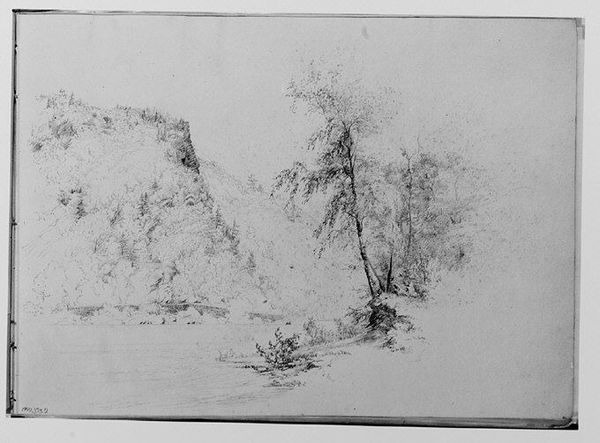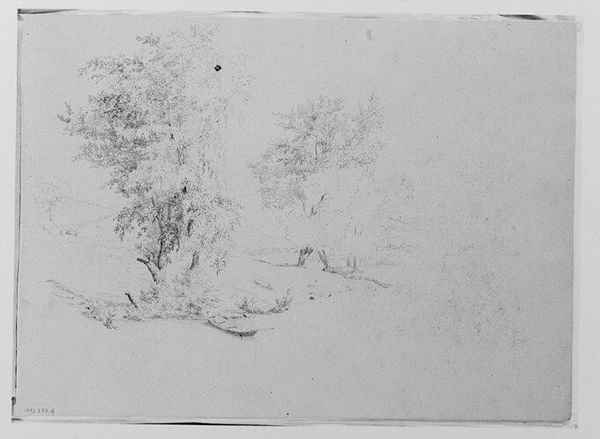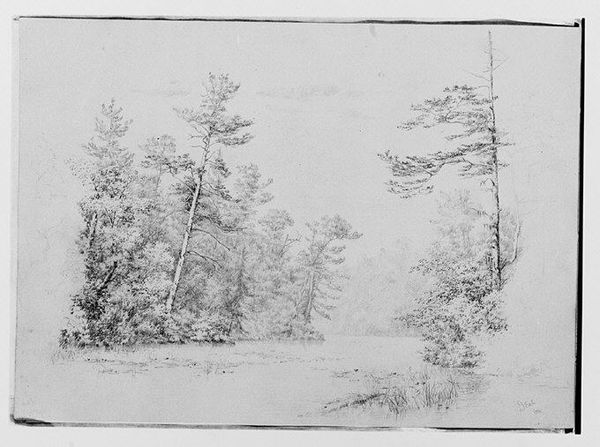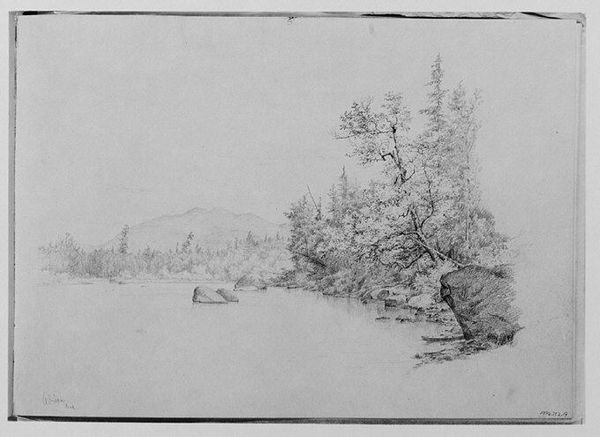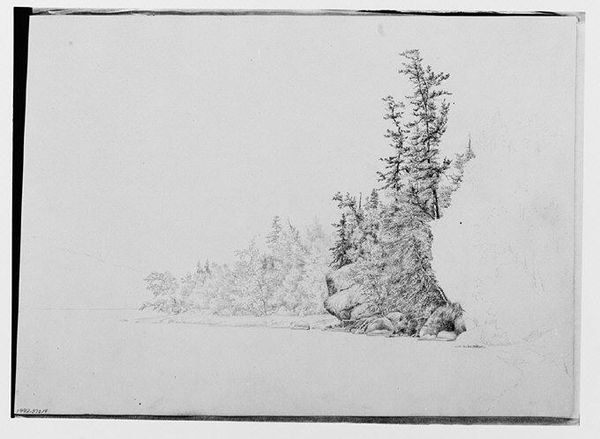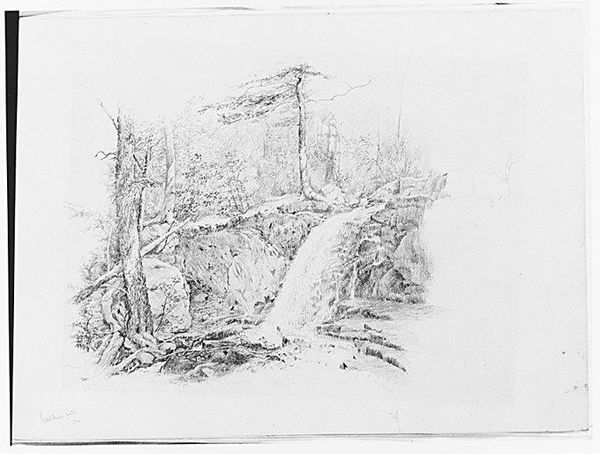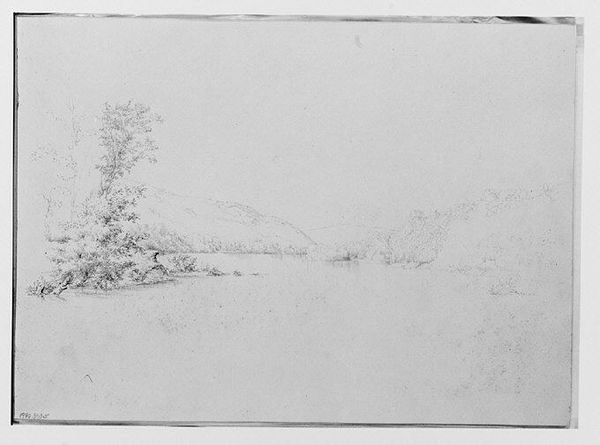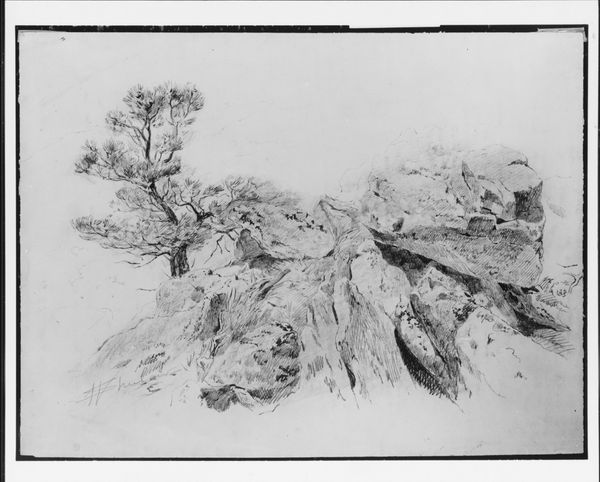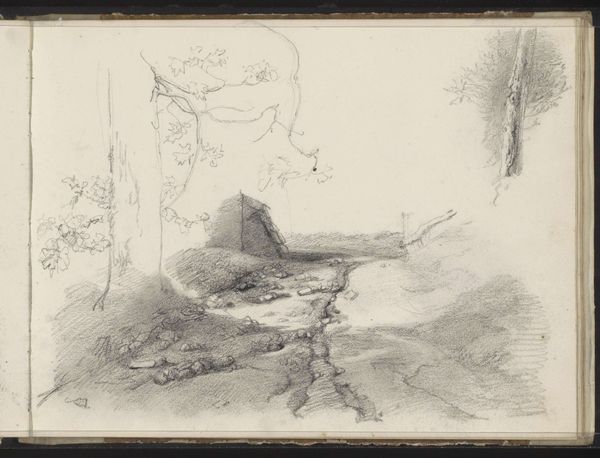
Catskill 1864: A Forest Stream (from Sketchbook) 1864
0:00
0:00
Dimensions: 9 3/4 x 13 7/8 in. (24.8 x 35.2 cm)
Copyright: Public Domain
Editor: Here we have Thomas Hewes Hinckley's "Catskill 1864: A Forest Stream (from Sketchbook)", made in 1864 with pencil. The drawing feels very raw and immediate, a captured moment in nature. What can you tell me about it? Curator: The piece seems rather modest at first glance, doesn't it? However, it reveals much about the commodification of the American landscape and the artistic labor involved in capturing it. Consider the Hudson River School—they popularized these views. What were the conditions allowing artists like Hinckley to engage in this particular kind of landscape drawing? Editor: You mean things like the availability of pencils and paper, and leisure time? Curator: Exactly! Pencil sketches became vital for artists to quickly record details, facilitating the later production of larger, more marketable paintings. Also, consider the rise of tourism in the Catskills. Hinckley wasn't just representing nature, but also participating in and shaping a burgeoning industry. Editor: So, even a simple sketch reveals a connection to economics and society. I never thought of it that way. Curator: Think about where Hinckley might have sourced his materials. How was the graphite mined, the paper manufactured? Whose labor made this sketch possible? These are rarely considered questions in traditional art history, but they’re vital for a materialist perspective. Editor: That definitely gives me a lot to consider the next time I look at landscape art! Curator: Indeed! And how seemingly "natural" scenes were, in fact, very constructed and deeply entwined with economic and social forces.
Comments
No comments
Be the first to comment and join the conversation on the ultimate creative platform.
